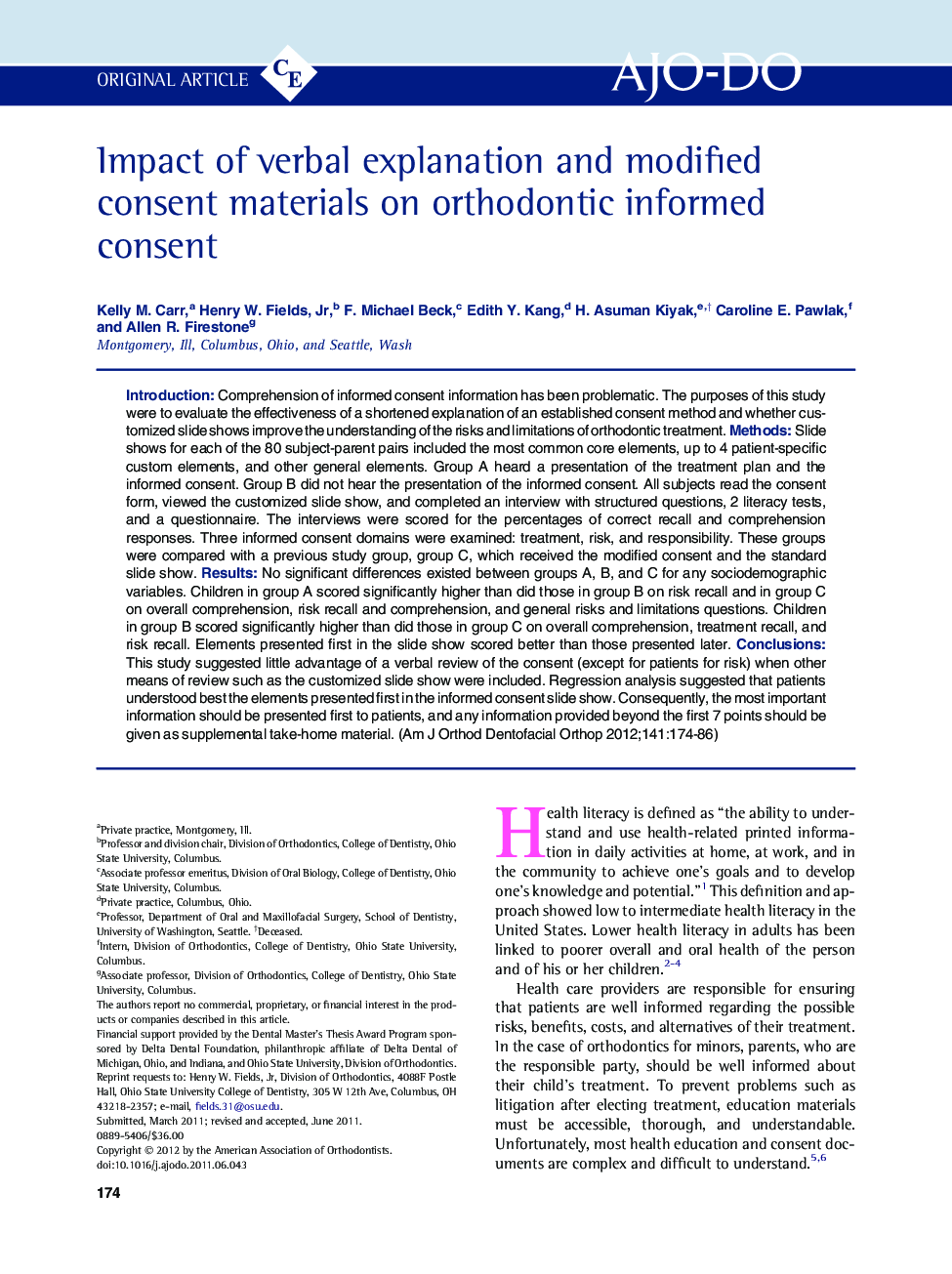| Article ID | Journal | Published Year | Pages | File Type |
|---|---|---|---|---|
| 3117079 | American Journal of Orthodontics and Dentofacial Orthopedics | 2012 | 13 Pages |
IntroductionComprehension of informed consent information has been problematic. The purposes of this study were to evaluate the effectiveness of a shortened explanation of an established consent method and whether customized slide shows improve the understanding of the risks and limitations of orthodontic treatment.MethodsSlide shows for each of the 80 subject-parent pairs included the most common core elements, up to 4 patient-specific custom elements, and other general elements. Group A heard a presentation of the treatment plan and the informed consent. Group B did not hear the presentation of the informed consent. All subjects read the consent form, viewed the customized slide show, and completed an interview with structured questions, 2 literacy tests, and a questionnaire. The interviews were scored for the percentages of correct recall and comprehension responses. Three informed consent domains were examined: treatment, risk, and responsibility. These groups were compared with a previous study group, group C, which received the modified consent and the standard slide show.ResultsNo significant differences existed between groups A, B, and C for any sociodemographic variables. Children in group A scored significantly higher than did those in group B on risk recall and in group C on overall comprehension, risk recall and comprehension, and general risks and limitations questions. Children in group B scored significantly higher than did those in group C on overall comprehension, treatment recall, and risk recall. Elements presented first in the slide show scored better than those presented later.ConclusionsThis study suggested little advantage of a verbal review of the consent (except for patients for risk) when other means of review such as the customized slide show were included. Regression analysis suggested that patients understood best the elements presented first in the informed consent slide show. Consequently, the most important information should be presented first to patients, and any information provided beyond the first 7 points should be given as supplemental take-home material.
